The international conference “Hydropower impact on river ecosystem functioning”
The international conference “Hydropower impact on river ecosystem functioning” was held in Tiraspol, during 08 and 09 of October and it was an opportunity to bring together members of NGOs, research institutions, universities, independent consultants and international organizations (UNDP, OSCE) to discuss the pressing issues regarding the impact of hydropower on ecosystem functioning of transboundary ecosystems of Dniester and Prut rivers. The key messages of the conference are reflected in this article.
The speakers that opened the conference mentioned about the huge importance of the conference and the need for a transboundary and ecosystem services approach for both Moldova and Ukraine for ensuring a long-term provision of these services. Assessment of hydropower impact is a very complex issue, particularly in the context of a changing climate. For example, in order to speak about the impact it is important to compare the actual data with the historical (the undisturbed status), before the construction of hydroconstructions. Unfortunately, not all the data is available and comparable and that in a way could be an advantage for the hydropower companies since they will judge this situation in their favor, considering it as “no impact” situation (Ilya Trombitsky, the executive director of Eco-Tiras and the coordinator of Eco-Tiras for HydroEcoNex project).
However, one shall recognize the seriosity and scale of the hydropower impact and the reasons why hydropower cannot be fully considered as a „green energy”. Looking at a first glance, it is indeed „green”, as hydropower does not pollute rivers, but however, such energy in the long term leads to a destruction of the main processes and functions of river ecosystems. As examples are the changes occurring in the production and destruction processes as well as river autopurification capacity. Currently the communities located downstream the hydropower node face a gradual destruction of Dniester River ecosystems, with observable transformations from a „flowing river” into a „standing river” and lot of many chain effects on different groups of organisms (phytoplankton, zoobenthos and fish) and hydrochemical processes (e.g. stock of suspended matter, main groups of ions, mineralization rate, oxygen and temperature regimes) (Elena Zubcov, the manager of HydroEconex project of the Institute of Zoology).
There is an obvious need of the joint and coordinated monitoring of transboundary Dniester River, that both Moldova and Ukraine has to conduct, in accordance to the Water Convention. Article 11 of this convention clearly state that the countries sharing the same rivers shall agree upon the rules for the creation of functional monitoring programs, including measuring systems or equipment, analytical methods for processing and evaluating data and methods for recording discharged substances. HydroEcoNex project can contribute to the solution of such problems (Bo Libert, an international consultant from Sweden).
Overview of historical data and current scientific results on hydropower impact on Dniester River – revealed that the construction of hydropower plants and the reservoirs on Dniester River led to considerable changes at ecosystem level, with quantitative and qualitative changes on the main groups of hydrobionts communities. It is important to share data between partners and develop common indicators, which could be appropriate for assessment of the impact (Nadejda Andreev, Institute of Zoology).
Addressing the issue of hydropower impact on river ecosystem services is very important, in a context where no countries were affected as much as Ukraine from hydropower impact. The impact on river ecosistems of 13 constructed and exploited hydropower units and the current political views to considerable intensify construction of hydropower facilities is scaring. Hydropower generates important ecological costs, such as ecosystem fragmentation and changing of the flow of the rivers or loss of the provision of ecosystem services to millions of people and nature, which cannot be compensated by the simple costs of the use of water. It is important to map the ecosystem services and find relevant and representative indicators of ecosystem assessment and calculate the costs of lost ecosystem services (Ruslan Havryliuk, National Ecological Center of Ukraine).
There are other projects that made considerable contribution toward improvement of situation regarding assessment of the status of river ecosystems and transboundary cooperation, such the GEF project „Enabling Transboundary Cooperation and Integrated Water Resources Management in the Dniester River Basin”. An important project result for transboundary cooperation and stakeholder involvement was the creation and organization of two meetings within the Dniester River Commission, as well as the activities of the Working Groups: 1) emergency situations; 2) ecosystems and biodiversity; 3) planning and management of river basins (Tamara Kutonova, OSCE representative).
If overviewing the historical data and the actual data, we could see a visible reaction of hydrobiont groups of lower Dniester to climate change and hydroconstructions. An important indicator to consider is the ratio of reophylous to limnophylous zoobenthic species. An increase in limno-reophilous species and a decrease in reo-limnophylous species, while an increase in the saprobic index was observed in comparison to the historical data. Phytoplankton biomass decrease in autumn and increase in winter was observed. The higher biomass of phytoplankton in winter might be due to changes in thermal regime and absence of ice cover during this (Svetlana Kovalishina , project coordinator from Ukrainian Scientific Centre of Ecology of Sea for HydroEcoNex project).
An assessment of the impact of hydrotechnical constructions on Dniester River and ecosystem status in the context of climate change requires hydrological data, analysis of which can allow to make conclusion of the extent of the impact. The calculations on the changes in multiannual volume of water flow showed a tendency of overall decrease, however not signficant – 1 %. Lack of data does not reflect fully the situation (Aleksandr Matygin, project coordinator from Hydrometerological Centre for Black and Azov Seas for HydroEcoNex project).
Analysis of the annual flow of Dniester River before and after the construction (I period- natural flow – before HPP construction, II period – modified flow due to Dubassary reservoir and III period – modified flow due to Dubassary and Novodnestrovsk reservoirs cascade operation) showed insignificant changes. More specific changes are observed when analysing monthly flows, when a decrease of flow can be clearly seen from period II to period III (30-50 %), particularly from March to July (Ana Jeleapov, Institute of Ecology and Geography).
Research on actual and historical data showed due to reservoir Costesti – Stanca and hydrotechnical construction, geomorphological changes of the riverbed, variation of water and sediment flows, decrease of migratory species and accidental introduction of invasive species of fish. In the special protected areas of Prut River the heavy metals, POPs, exceeded very much the maximum allowable level (Antoaneta Ene, project coordinator from University Dunarea de Jos Galati for HydroEcoNex project).
Regulation of river flows as a result of construction of hydropower nodes, causes a seria of changes in ecological and biological indicators of water and riparian ecosystems, loss of biodiversity and deleterious effects on community structures. Dubasary and Cuciurgan reservoirs – worsening of ecological state. An increased development of macrophytes and algae which create unfavourable oxygene conditions for development of other groups of hydrobionts (Serghei Filipenco, Tiraspol State University of T.G.Shevcenco).
The hydrological regime of Dniester and Prut rivers was unfavourable for species reproducing early in the spring such as pike perch. There was an increase in the species which are characteristic for lakes (litophylous), ichtyophagous and malacophagous species which encountered an improvement of the nutritious base (Bulat Dumitru, Institute of Zoology).
Hydrological conditions are the driving factors for the distribution and abundance of According to the obtained results for the period of 70 years, the structure of the Dniester zoobenthos on the territory of the Republic of Moldova has significantly changed in regard to the species composition, abundance and biomass, a substantial part of these changes can be associated with functioning of hydro constructions. A considerable decrease was observed in the number of once very abundant species such as Plecoptera, Ephemeroptera and Trichoptera. A total disappearance of a snail Unio crassus Philipsson,1788 (Bivalvia), (IUCN), currently found only on the upper part of Dubassary reservoir. At the same time, an increase of biomass and number of the species resistant to low oxygen level and muddy bottoms was observed, e.g. Viviparus viviparus (Linnaeus, 1758). Another negative effect on river ecosystem is the spread of invasive species – Branchiura sowerbyi Beddard, 1892 (Oligochaeta), D. rostriformis bugensis (Bivalvia), Ferrissia fragilis (Tryon, 1863) (Gastropoda) which find more favorable conditions than the native species (Oxana Munjiu, Institute of Zoology).
Overgrowing of the shallow water and sandbanks with aquatic plants often leads to their separation from the main water area and, consequently, to a decrease in the spawning places for fish. Dense thickets of aquatic plants leads to an intense accumulation of suspended solids in shallow water. hydraulic resistance to water flow, and activation of the process of siltation of the water area. To plants overgrowing the shallows and edges of the low coasts include: Alisma lanceolatum, Alisma plantagoaquatica, Butomus umbellatus, Crypsis aculeate, Epilobium palustre, Juncus compressus, Juncus gerardi, Juncus ranarius, Lemna gibba, Lemna minor, Lemna trisulca, Lythrum salicaria, Rorippa amphibian, Rorippa austriaca, Rorippa sylvestris, Veronica anagallisaquatica, Zannichellia palustris (Evghenii Semeniuc, Moldova State University).
In both Dniester and Prut river basins, a sharp and statistically significant increase in air temperature was observed. Projections made showed that climate change can potentially add and magnify the risks from hydropower impact on river ecosystem functioning (Roman Corobov, Ilya Trombitsky, Eco-Tiras).
At the end of the conference, the recommendations of the conference was discussed regarding the changes to be introduced and how to reach more effectively the decision makers. The proceedings of the conference can be downloaded from http://eco-tiras.org/books/conferinta_tiraspol_2019.pdf
Nadejda Andreev, HydroEcoNex team, Institute of Zoology
Photo: Ilya Trombitsky, Oxana Munjiu.




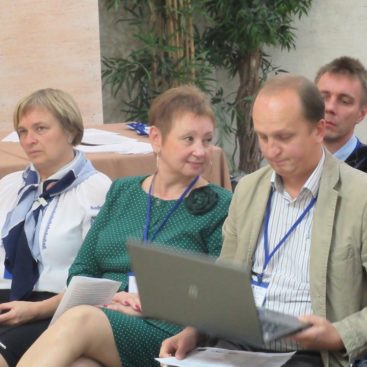
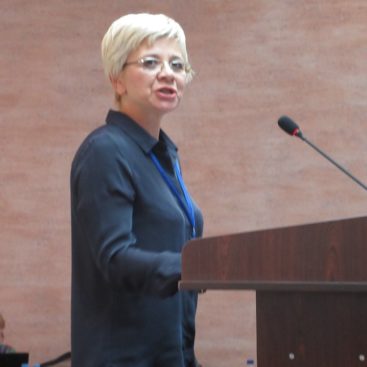
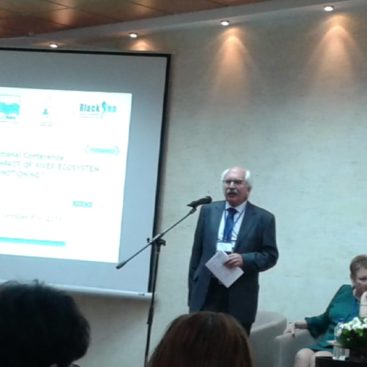
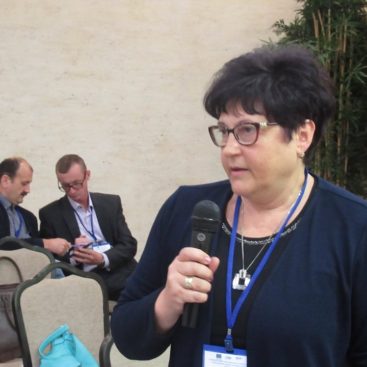

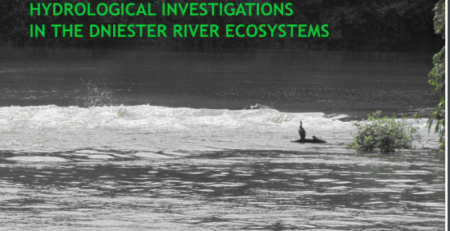

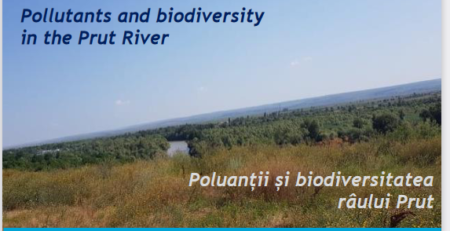

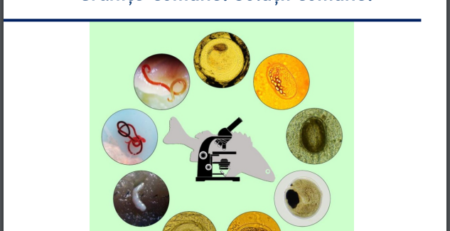

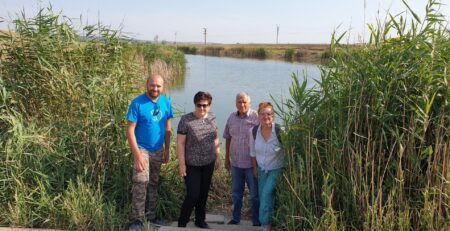
Leave a Reply
You must be logged in to post a comment.